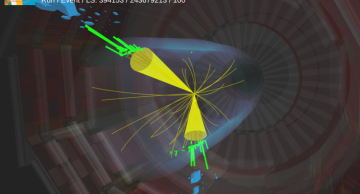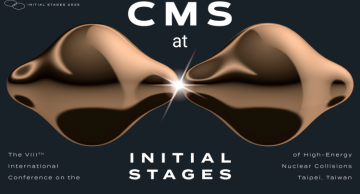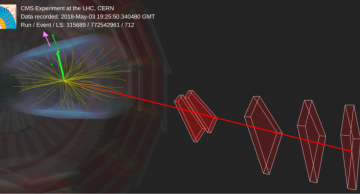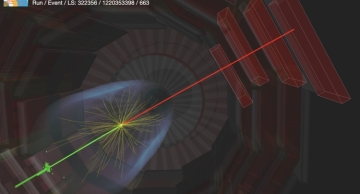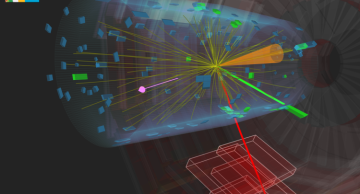CMS observes collective motion of particles in light-ion collisions, providing robust evidence of how initial nuclear geometry maps to final-state flow.
For the first time, the CMS experiment has measured how particles flow in collisions of…
News
|
maiqbal |
Physics
|
maiqbal |
Physics
The CMS experiment has analyzed the first-ever neon-neon collisions, looking for signs of quark-gluon plasma. By comparing these results with data from oxygen-oxygen, xenon-xenon, and lead-lead collisions, physicists find an interesting…
|
maiqbal |
Physics
CMS scientists study the first-ever oxygen-oxygen collisions at the LHC, and observe signs of quarks and gluons losing energy when they travel through quark-gluon plasma – a state that existed just after the Big Bang.
When heavy ions such as…
|
maiqbal |
Physics
At the Initial Stages conference, CMS announces first brand new results based on the recent oxygen-oxygen and neon-neon collision data.
The new data offers unique opportunities to study the collective phenomena and initial-state effects in…
|
sohurst |
Engage with CMS
Build your own CMS detector at home!
Well… sort of! Perhaps it won’t function just as well as the real deal, but you can keep a little model of it with you to gaze at, use it to help others visualise what the detector looks like, or keep it front…
|
maiqbal |
Physics
Turning the LHC into a photon collider, the CMS experiment observes for the first time how two photons fuse and convert into two W bosons. Stringent limits are set on parameters that would describe possible deviations from the standard…
|
maiqbal |
Physics
In a first search of its kind at the LHC, the CMS experiment looks for light beyond-the-standard-model particles with a mass in the GeV range that decay into charged hadrons and muons. It establishes that if they exist, they would be produced…
|
maiqbal |
Physics
The CMS experiment announces several new results for the Lepton-Photon 2025 conference.
A major highlight is the high-precision measurement of the integrated luminosity. With an uncertainty of 0.73%, this is the most precise luminosity…
|
maiqbal |
Physics
In a much anticipated result, the CMS experiment presents the legacy combination of Higgs boson studies using the full LHC Run 2 data, recorded between 2016 and 2018 – the result is the most precise and comprehensive measurement of the Higgs…
|
adelanno |
Physics
The CMS Collaboration probes decays of the Z boson which would defy our expectations of lepton behavior
How strict are Nature's conservation laws governing the interactions among elementary particles? Physicists once assumed, based on experience…
|
adelanno |
Physics
Measuring the charge asymmetry in W boson-associated production for the first time, paves the way for testing the coupling of the Higgs boson to charm and lighter quarks.
A new angle on Higgs physics
In a new analysis, the CMS experiment at CERN…
|
sohurst |
Detector
The increase in data processing capabilities means that CMS is one step closer to being ready for Run 4.
The new Data Acquisition (DAQ) room is a state-of-the-art server room, essential for the Hi-Lumi phase of the detector and beyond. New server…



